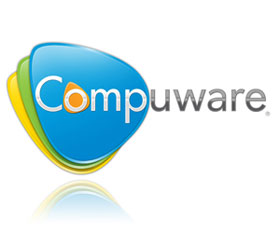Contact centres in the cloud
It’s tough to page through a technology publication today without seeing some mention of “cloud computing.” And it’s no wonder why.
Cloud computing is providing scalable, cost-effective resources as a service over the Internet. In this tight economy, that’s a huge value proposition.
Today, there exists a wealth of hosted UC solutions for contact centres. What’s interesting is how the original drivers for this migration have already begun to change. Traditional drivers boiled down to reduced costs: lower up-front capital expenditures, a “pay-as-you-go” pricing model, and reduced IT maintenance and management expenses.
A more recent driver, however, is flexibility: both the ability to quickly scale up and down (especially the ability to quickly provision multiple sites and remote agents), and the ability to more quickly add sophisticated applications.
While not a major driver yet, contact centres are weighing “green” factors more heavily too, which is making the eco-friendly attributes of hosted UC solutions more desirable (e.g. less infrastructure equals reduced carbon footprint).
The growing number of hosted UC solutions offered, combined with new drivers for adoption, makes the decision-making process for contact centre increasingly complex. But contact centres must start at the beginning. Despite the potential benefits of hosted UC solutions, it’s not for everyone.
There are certain business environments that might be better suited to a premise model. These include the following:
. IT staff requires full administrative access and control
. Applications require a high degree of custom development
. Industry requires stringent compliance with many regulations
and/or security policies
While all of these are valid considerations, it’s important to note that the industry is rapidly addressing them. Some hosted UC vendors are offering new delivery models and new server architectures designed to dramatically improve control, security, and reliability.
In addition, migrating to the cloud is no longer an all-or-nothing proposition. More vendors today are offering hybrid options that enable contact centres to host some UC applications, while keeping others on-premise.
Should your contact centre decide to move to the cloud after a thorough due diligence process based on benefits, risks, and business requirements, the next step is selecting the right vendor.
What is the criteria contact centre should use to select a hosted UC solutions provider?
Control, security, and reliability
One of the most important factors to consider when selecting a hosted UC vendor is the degree to which it offers control, security, and reliability. Differences in hosted delivery model s and server architectures directly impact these capabilities. Finally, be sure to conduct a thorough audit of the vendor’s hosted facility (both the infrastructure and policies).
Software supplier versus third-party
Another important factor is whether the service is offered by the company that developed the software or by a third-party. If it’s the software supplier, as long as the vendor has a proven track record developing and delivering hosted UC solutions, there are typically only advantages to acquiring services from them.
First, the software supplier gives contact centre immediate access to enhancements — customers don’t have to wait for third-parties to get trained on enhancements and test them. Second, contact centre have a greater ability to influence development. And third, because the supplier develops the software, they are maximally invested and odds of them abandoning the business are reduced.
Migration path to premise
Providing contact centres with an easy migration path from hosted to premise is another crucial factor when selecting a vendor. If the hosted UC vendor also offers premise-based solutions, and if it also functions as the software supplier, odds are good that this migration is possible with no impact on applications.
Single-platform Architecture
This is where the “UC” aspect of hosted really kicks in. Many hosted UC vendor solutions are based on premise equipment composed of loosely integrated products from different manufacturers. This introduces an element of cost and complexity that the movement of “UC” has tried to address.
But don’t be fooled. Many of these same vendors have simply slapped the UC label on the same old products. Ask the vendor which applications were inherently developed versus which are offered via partnerships or acquisitions. The more platforms in the mix, the greater chance of management complexity and finger-pointing should things go awry.
However the hosted UC market grows, one thing is for sure, growth will continue into the foreseeable future. Innovations in the areas of networks, virtual server technology, and Web interfaces will eliminate any remaining functional limitations, and vendors will continue to add applications to their hosted UC solutions. So do your due diligence and be glad to know that you’ll have plenty of company should you decide to walk the hosted path.
By Fokion Natsis, Interactive Intelligence’s South African country manager



